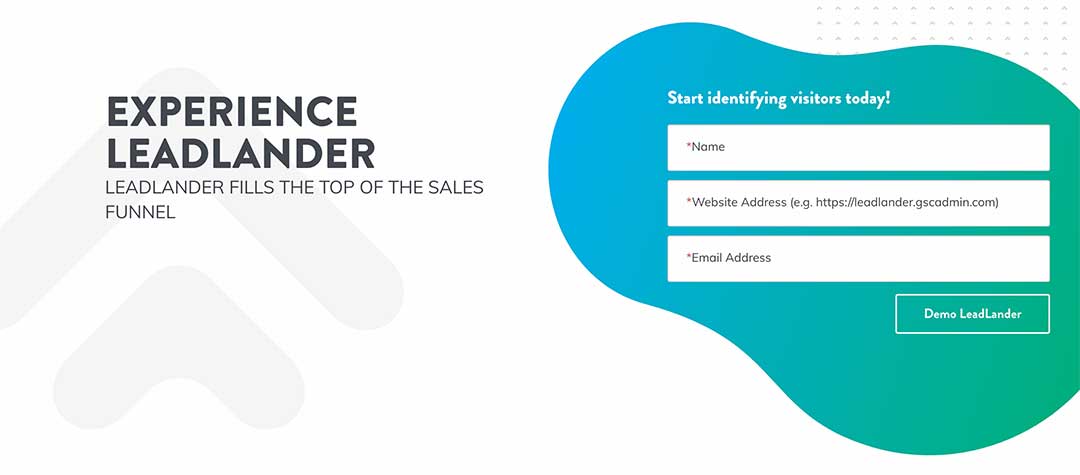Multiple companies still use hidden web beacons to track their users’ behavior online, and it’s high-time companies shift marketing strategies to embrace growing consumer sentiment around internet privacy. In this article, we’ll discuss web beacons, how they intersect with the modern internet privacy movement, why it’s worth updating your marketing strategy, and what you can do to stop using them without impacting your conversion rates for website visitors.
What are web beacons?
A web beacon is a single pixel that marketers use to track consumers’ behavior. They’re also sometimes called “web bugs,” “pixel tags,” and a “clear GIF.”
When you include a web beacon on a web page, email, or online ad, it records whenever a user interacts with that content. That way, a company can track a user’s behavior across multiple marketing endpoints in non-invasive methods.
Companies use this data to learn more about their target audience’s online behavior, which they use to create personalized marketing content.
Where are they used?
Web beacons are typically used in emails and on web pages. For example, a company might put one on a landing page to track whenever a user visits. Or a business might include a web beacon on a blog post to see which users care about the type of content that the blog post covers.
But really, a company can include a web beacon anywhere, so placement varies from website to website.
How do they differ from cookies?
Web beacons and cookies are very similar. Both collect data from users, which marketers use to serve more personalized content in the future.
But if you want to get technical…
- Cookies are pieces of information passed back and forth between a user’s browser and a web server. They let you identify specific users.
- Web beacons recognize user activity by operating as a sort of tag that occurs whenever a user visits a particular piece of content.
Web beacons and cookies are used in combination. For example, a company might use a cookie to identify a specific user and a web beacon to track how users interact with different forms of content.
But what you should know is that modern consumers tend to look at cookies and web beacons as invasive attempts to collect private information.

Updating your marketing strategy: The future of data privacy and web beacons
Web beacons are relatively common today. But there’s reason to believe they won’t be in the future. Two main driving forces are pushing this change.
Shifting data privacy expectations
Consumers care, more than ever, about data privacy. That means companies continuing to use invasive data collection practices risk angering their target audience.
The modern business landscape is highly competitive. You can’t afford to risk giving your customers an apparent reason to go with a competitor instead of you.
Legislation
As consumers grow more vocal about online data privacy online, government bodies are taking notice. Many choose to pass legislation that outlines the specific data collection practices that companies can use online.
Perhaps the most critical piece of data privacy legislation is the European Union’s GDPR. It places significant restrictions on how companies can track user data online and imposes hefty fines against any business that violates those mandates. This type of legislation is also popping up in the United States, such as in California’s Consumer Privacy Protection Act (CCPA).
The point is that businesses don’t just have to worry about angering their target audience regarding data privacy. They’re also going to have to contend with legislation that places restrictions on how they can use consumer data for digital marketing.
How to adapt your marketing strategy in the face of these changes
Given how effective web beacons are at analyzing website visitors’ behavior, you may worry your conversion rates will decrease considerably once you stop using them.
However, suppose your company embraces the right marketing changes. It could maintain or even improve its current levels of effectiveness without relying on invasive data collection practices.
Here are some of the top strategies for changing your marketing practices without sacrificing effectiveness.
Transparency will be crucial
The number one thing your business can do to adapt to the changing data privacy landscape is to increase its transparency around these practices.
Ideally, you want to make it clear to your website visitors:
- What type of data you’re collecting from them
- How you’re using it
- What rights they have to opt-out of your data collection practices and delete the data you might have already collected
Data collection isn’t inherently bad. It helps companies provide more accurate offers and information to prospective buyers. Many people appreciate those benefits and enjoy a more effortless shopping experience because of them.
The problem lies in most companies’ dubious data collection practices. When you’re transparent with your audience, you remove this mystery and help them perform a more accurate cost-benefit analysis.
Invest in contextual advertising
Personalization is essential in digital marketing. But you don’t have to use web beacons, cookies, and other invasive practices to deliver personalized content to your target audience.
Instead, experiment with alternative methods of delivering the right content to the right person, such as contextual advertising. Contextual advertising is a strategy that involves placing ads on pages with content that’s related to what you’re selling.
For example, if you sell B2B tax software, you could place ads on popular blog posts about business tax regulations or best practices. If someone goes to a blog post that covers this type of content, they’re also most likely going to be a good fit for your product.
Gather user information in other ways
Web beacons and cookies are all about getting data from users to feed into your marketing and sales funnels. But these aren’t the only ways to gather that information.
Get the data you want from your users by asking them to complete surveys. Or by giving them a special deal or discount to give you the information you’re looking for.
Your goal is to get users to volunteer their information so you don’t have to collect it. There are many incentives you can offer your target audience to encourage them to do that.
Let people opt into your data collection practices
Finally, it’s also good to shift from an opt-out data collection system to an opt-in one. More users than you think will accept your data collection practices if you can highlight the benefits or put the ask into a more attractive package.
Skincare companies need to know what type of skin a website visitor has to market the right products to them in the future. They’ll often put together a skincare assessment quiz for users to take to get that information.
These quizzes offer something valuable to those who take them: information about which skincare products they need to achieve their desired skin goals. And the companies get the information they need from these quizzes to market their products in more personalized ways.

LeadLander can help you improve your conversion rates without being invasive
Web beacons and cookies are fast becoming a relic of the past. Cue LeadLander. Our website visitor tracking software helps you gather all of the information from your website visitors you need to make more informed marketing and sales decisions. With LeadLander, you can get the information you need without being invasive.

Sign up for a free 14-day trial of LeadLander today to experience our value.
Related Reading

